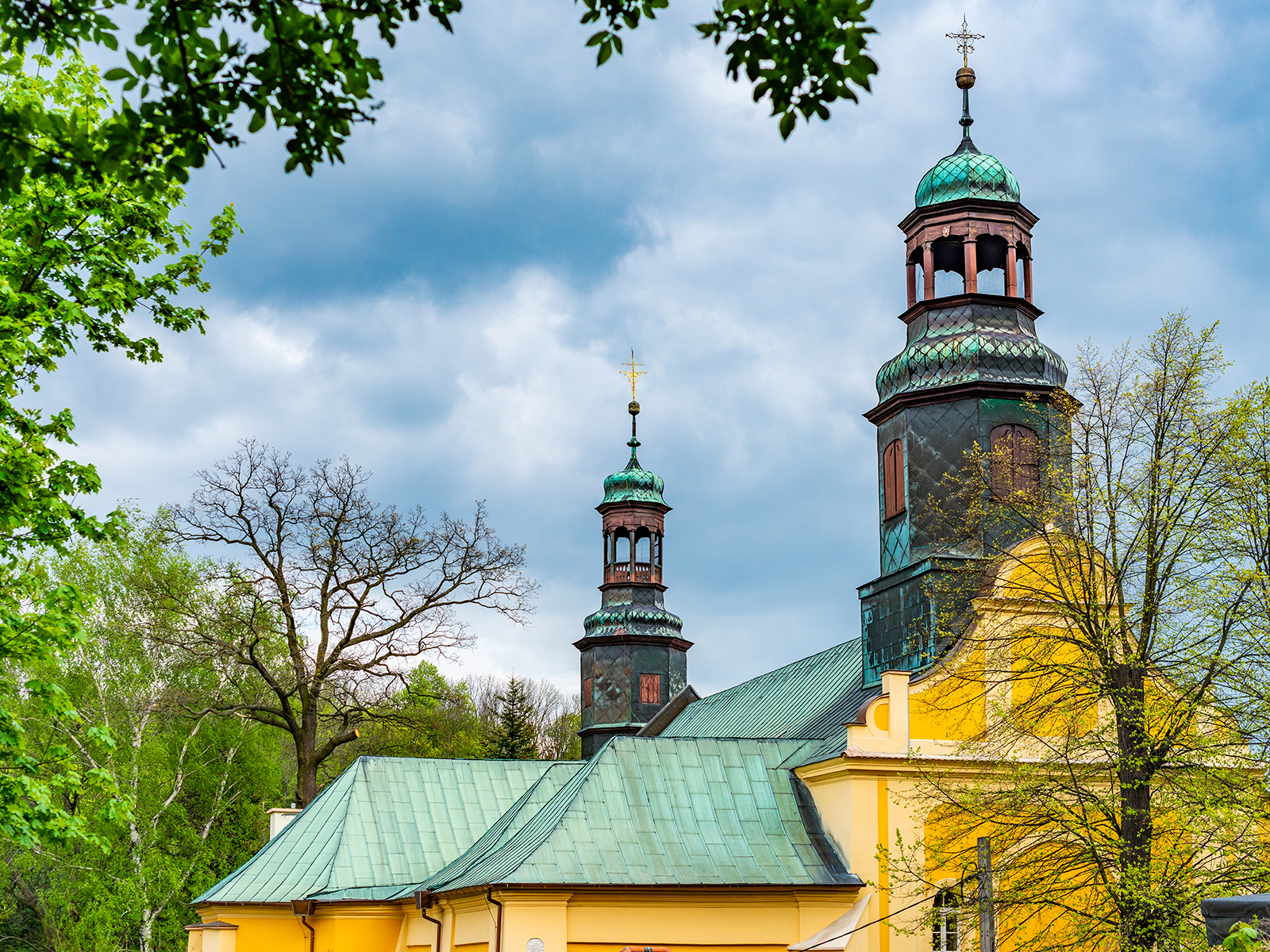Saint George’s and Saint Adalbert’s church
Saint George’s and Saint Adalbert’s church of Christ the King and the Poor Clares convent. The church was founded back in the 15th century by Henry the Elder, the count of Kłodzko, but underwent numerous subsequent reconstructions and expansions. It was never a major tourist attraction, but this all changed because of a certain discovery in 2015. When the paint on the ceiling was being removed, it revealed the forgotten frescos of Karl Dankwart, a prominent baroque artist and court painter to King John III Sobieski. His works include the paintings inside the Jasna Góra basilica in Częstochowa. The precious frescos in Kłodzko are currently being exposed, restored, and examined by experts.

The first reference to this location on record comes from 1275 and concerns Saint George’s chapel at the hospital operated by the Order of Saint John. When the order moved to the centre of the city, the chapel was left to rot and was burned down together with the hospital in 1470.
In 1475, the Duke of Ziębice Henry I of the house of Poděbrady handed the area over to the Bernardines and – together with his wife Ursula of Brandenburg – founded the Saint George’s church and chapel. The temple was consecrated in 1479 by Wrocław Bishop Rudolf von Rüdesheim on behalf of the Archbishop of Prague. During the consecration, the church obtained a co-patron: Saint Adalbert. Its benefactor died nine years later and was laid to rest in the crypt under the presbytery. A fire broke out in 1517 and considerably damaged both the church are the monastery. The reconstruction process was very slow and tedious. It was the reformation era and there were no new callings. When the Order left the city (1546), it released both buildings into the hands of the City Council. The monastery was transformed into a hospital for the poor and the church was used as the hospital chapel. The buildings were ultimately destroyed during the Thirty Years' War when Kłodzko was captured by Austrians.
The ruins were then left unattended for several years, but the Bernardines would return in 1643 and start rebuilding the church and the monastery, a process, which – with some interruptions – took 150 years. The gothic presbytery was preserved while the nave and chapels were modernised in a late baroque style. A wagon vault was also installed. In 1665, the new temple was consecrated by Cardinal Ernst Adalbert von Harrach. In 1760, during the Austrian siege of the Third Silesian War, another fire broke out in the church. After the war, the tower was rebuilt and a second – smaller one – was erected. In 1810, after the Order was disbanded, the church was used to store hay and straw for the Prussian garrison while the monastery was converted to office space for officers, residences for soldiers and their families, and a hospital. In 1834, authorities transformed the church into an evangelical garrison church.
New tenants moved in after World War II: the Franciscan nuns of the Blessed Sacrament (now known as the Poor Clares of Perpetual Adoration). The church was reopened in 1947, once again as a catholic temple. It was known as the Christ the King church from 1956 until 1990.
The church is a single-nave structure with a row of chapels to the north. It was built in a late baroque style with gothic elements. It is a brick building with plastered walls. It is 50 m long and 10 m wide. There are two bays and two buttresses in the semi-octagon-shaped presbytery, the only gothic remains of the building. There are three windows in the nave. The southern windows were bricked up. The interior decoration is austere and modest because the original one has not been preserved. The frescos are contemporary and the Stations of the Cross are made of plaster. The towers are topped with bulbous cupolas with traceries. The portals leading inside date back to mid-18th century.
To the south of the church stands the baroque structure of the monastery, which was built in the years 1664–1665. This is a quadrilateral building with an internal garth. It has pitched roofs and the elevations are divided with lesenes.
Download the guide
Click on the download button to download the brochure "Kłodzko in seven days" in .pdf format
contact
Kłodzko, ul. Łukasińskiego 34
+48 74 867 28 27
klodzko@klaryski.org
klodzko.klaryski.org/
FB/klaryskiklodzko

